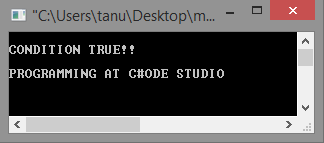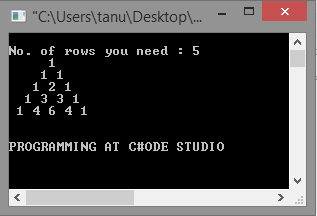| Pos. | Operator | Description | Method |
|---|---|---|---|
| 1 | :: | scope | Left-to-right |
| 2 | () [] . -> ++ -- dynamic_cast static_cast reinterpret_cast const_cast typeid | postfix | Left-to-right |
| 3 | ++ -- ~ ! sizeof() new delete | unary (prefix) | Right-to-left |
| * & | indirection and reference (pointers) | ||
| + - | unary sign operator | ||
| 4 | (type) | type casting | Right-to-left |
| 5 | .* ->* | pointer-to-member | Left-to-right |
| 6 | * / % | multiplicative | Left-to-right |
| 7 | + - | additive | Left-to-right |
| 8 | << >> | shift | Left-to-right |
| 9 | < > <= >= | relational | Left-to-right |
| 10 | == != | equality | Left-to-right |
| 11 | & | bitwise AND | Left-to-right |
| 12 | ^ | bitwise XOR | Left-to-right |
| 13 | | | bitwise OR | Left-to-right |
| 14 | && | logical AND | Left-to-right |
| 15 | || | logical OR | Left-to-right |
| 16 | ?: | conditional | Right-to-left |
| 17 | = *= /= %= += -= >>= <<= &= ^= |= | assignment | Right-to-left |
| 18 | , | comma | Left-to-right |
Category Archives: CSE104
USING MACROS IN C;
QUESTION- WAP to use the #define function in a c program as an operator;
ANSWER-
#include<stdio.h>
#include<conio.h>
#define D ||
#define G &&
int main()
{
int p=10,q=20,r=30;
if((p==10) G (q<25 D r>=50))
printf(“\nCONDITION TRUE!!”);
else
printf(“\nCONDITION FALSE!!”);
printf(“\n\nPROGRAMMING AT C#ODE STUDIO”);
getch();
return 0;
}
PASCAL’S TRIANGLE;
QUES- WAP to print the pascals triangle after taking the input from user;
ANSWER-
#include<stdio.h>
#include<conio.h>
long int cal(int);
int main()
{
int i,j,r,p;
printf(“\nNo. of rows you need : “);
scanf(“%d”,&r);
for(i=0;i<r;i++)
{
for(j=0;j<=(r-i-1);j++)
printf(” “);
for(j=0;j<=i;j++)
{
p=cal(i)/(cal(j)*cal(i-j));
printf(“%ld “,p);
}
printf(“\n”);
}
printf(“\n\nPROGRAMMING AT C#ODE STUDIO”);
getch();
return 0;
}
long int cal( int num)
{
int x;
long r=1;
for(x=1; x<=num; x++)
r=r*x;
return (r);
}
PYRAMID DESIGNING;
QUESTION- WRITE A C PROGRAM TO ACCEPT NO. OF ROWS FROM USER AND DISPLAY THE NUMBER PYRAMID;
ANSWER-
#include<stdio.h>
#include<conio.h>
int main()
{
int n,r,c,q;
printf(“\nNo.of rows you want : “);
scanf(“%d”,&n);
for(r=1; r<=n; r++)
{
for(q=n-r; q>=1; q–)
printf(” “);
for(c=1; c<=r; c++)
printf(“%d”,c);
for(c=r-1; c>=1; c–)
printf(“%d”,c);
printf(“\n”);
}
for(r=1; r<=n; r++)
{
for(q=r; q>=1; q–)
printf(” “);
for(c=1; c<=(n-r); c++)
printf(“%d”,c);
for(c=n-r-1; c>=1; c–)
printf(“%d”,c);
printf(“\n”);
}
printf(“\nPROGRAMMING AT C#ODE STUDIO”);
getch();
return 0;
}
Append Mode & Copying a file;
Question- Copy a file into new file and write more data into that file and display the records;
Answer-
#include<stdio.h>
#include<conio.h>
int main()
{
struct student
{
char name[10];
char pname[5];
int term;
double fee;
}s,r,v[2];
int i;
FILE *f1,*f2;
f1=fopen(“origin.txt”,”w”);
printf(“\nNew File ORIGIN.TXT Open.”);
printf(“\nEnter name – “);
scanf(“%s”,&s.name);
printf(“\nEnter Program name – “);
scanf(“%s”,&s.pname);
printf(“\nEnter Term id -“);
scanf(“%d”,&s.term);
printf(“\nEnter Fees – “);
scanf(“%ld”,&s.fee);
fwrite(&s,sizeof(s),1,f1);
fclose(f1);
printf(“\nORIGIN.TXT Opened in read mode and NEW.TXT in write mode.”);
f1=fopen(“origin.txt”,”r”);
f2=fopen(“new.txt”,”w”);
fread(&r,sizeof(r),1,f1); //reading the data from origin.txt
fwrite(&r,sizeof(s),1,f2); //copying data to new.txt
printf(“\nCopying completed.”);
fclose(f1);
fclose(f2);
printf(“\nExsiting File NEW.TXT Open as append mode.”);
f2=fopen(“new.txt”,”a”); //in append mode the pointer in file is set to the last of file
printf(“\n\nEnter name – “);
scanf(“%s”,&s.name);
printf(“\nEnter Program name – “);
scanf(“%s”,&s.pname);
printf(“\nEnter Term id -“);
scanf(“%d”,&s.term);
printf(“\nEnter Fees – “);
scanf(“%ld”,&s.fee);
fwrite(&s,sizeof(s),1,f2);
fclose(f2);
printf(“\nExsiting File NEW.TXT Open as read mode.”);
f2=fopen(“new.txt”,”r”);
for(i=0;i<2;i++)
{
fread(&v[i],sizeof(v[i]),1,f2);
printf(“\n\nName= %s\nProgram name = %s\nTerm id = %d\nFees = %ld”,v[i].name,v[i].pname,v[i].term,v[i].fee);
}
printf(“\n\n\tPROGRAMMING @ CODE STUDIO”);
getch();
}
OUTPUT-
CHECKING LEAP YEAR OR NOT;
QUESTION- WAP to find a year is leap year or not;
ANSWER-
#include<conio.h>
#include<stdio.h>
int main()
{
int year,n;
printf(“\nENTER 1 TO START:”);
scanf(“%d”,&n);
while(n==1)
{
printf(“\nENTER YEAR:”);
scanf(“%d”,&year);
if(((year%4==0)&&(year%100!=0))||(year%400==0))
printf(“%d IS A LEAP YEAR”,year);
else
printf(“%d NOT A LEAP YEAR”,year);
printf(“\n\nENTER 1 TO CONTINUE, 0 TO EXIT:”);
scanf(“%d”,&n);
}
printf(“\n\n\tPROGRAMMING @ CODE STUDIO”);
getch();
}
OUTPUT–
WRITE REVERSE OF A FILE IN ANOTHER;
QUESTION BY- vishwas goyal < vishwasgoyal.182@gmail.com > WAP to copy a file in reverse order..
ANSWER-
OHHHH THIS PROGRAM IS REALLY SO COMPLICATED; ![]()
—————————————-
#include<stdio.h>
#include<conio.h>
int main()
{
FILE *f1,*f2;
f1=fopen(“input.txt”,”w”);
char c,d[50];
printf(“\nENTER CHARACTERS, TO QUIT PRESS q : \n”);
c=getchar();
while(c!=’q’)
{
fputc(c,f1);
c=getchar();
}
fclose(f1);
f1=fopen(“input.txt”,”r”);
int i=0,max;
while(!feof(f1))
{
c=fgetc(f1);
d[i]=c;
i++;
}
max=i;
fclose(f1);
f2=fopen(“output.txt”,”w”);
for(i=max-2;i>=0;i–)
{
fputc(d[i],f2);
}
fclose(f2);
f1=fopen(“output.txt”,”r”);
while(!feof(f1))
{
c=fgetc(f1);
printf(“%c”,c);
}
printf(“\n\n\tPROGRAMMING @ CODE STUDIO”);
getch();
}
OUTPUT (FILES)-
OUTPUT (SCREEN)-
BINARY TO DECIMAL;
QUESTION- WRITE A PROGRAM TO CONVERT A NO. FROM BINARY TO DECIMAL USING FN.
ANSWER;
#include<stdio.h>
#include <math.h>
#include<conio.h>
int fn1(long int);
int main()
{
long int dec,rem,quo;
printf(“Enter any BINARY number: “);
scanf(“%ld”,&quo);
fn1(quo);
printf(“\n\n\tPROGRAMMING @CODE STUDIO”);
getch();
}
int fn1(long int quo)
{
long int rem,dec=0,j=1;
while(quo!=0)
{
rem=fmod(quo,10);
dec=dec+rem*j;
j=j*2;
quo=quo/10;
}
printf(“\nEQUIVALENT DECIMAL NO. IS %ld”,dec);
}
OUTPUT-
WORKING WITH STRINGS;
QUESTION- CONVERT STRING FROM UPPER CASE TO LOWER CASE( VICE VERSA ALSO ) AND CHECK IF 2 STRINGS ARE SAME;
ANSWER;
#include<stdio.h>
#include<conio.h>
#include<string.h>
int main()
{
int m;
char a[10],b[10],c[10],d[10],e[10],f[10],*co;
printf(“Input string a in lower case:”);
scanf(“%s”,&a);
strcpy(b,a);
printf(“\nB is =”);
printf(“%s”,b);
strupr(b);
printf(“\nUpper case:”);
printf(“%s”,b);
printf(“\n\nChecking for equal strings\nInput string d:”);
scanf(“%s”,&d);
printf(“\nInput string e:”);
scanf(“%s”,&e);
m=strcmp(d,e);
if(m==0)
printf(“\nString d and e are same”);
else
printf(“\nString d and e are not equal”);
printf(“\n\nConvering to lower case\nInput string in f in upper case:”);
scanf(“%s”,&f);
strlwr(f);
printf(“\nf in lower case :”);
printf(“%s”,f);
printf(“\n\n\tPROGRAMMING @ CODE STUDIO”);
getch();
}
OUTPUTS-
Fibonacci series using fn and recursion;
#include<stdio.h>
#include<conio.h>
int f(int a); //PROTOTYPE TO SECOND FN.//
int main()
{
int a;
printf(“\nINPUT A NUMBER:”);
scanf(“%d”,&a);
printf(“\nSERIES IS :\n”);
for(int i=0;i<a;i++)
printf(“%d\t”,f(i));
printf(“\n\n\tPROGRAMMING @ CODE STUDIO”);
getch();
}
int f(int a) //fn 2nd starts here//
{
if(a==0)
return 0;
if(a==1)
return 1;
else
return (f(a-1)+f(a-2));
}
OUTPUT-









